When it comes to accurately estimating interior and exterior commercial painting jobs, professionals in the industry have a lot to consider. From calculating the cost of labor and materials to equipment and miscellaneous items, there is no doubt that the task can sometimes seem overwhelming.
For the best results and customer satisfaction, estimates should be flexible and adaptable to project modifications. In developing an accurate cost estimate, companies must first assess the scope of the project, along with any technical implications. However, if you’re not interested in manually factoring in the size of a project, the amount of coatings needed, material and labor costs or a timeline for the job to create an ideal estimate that works for you and your customer, there are other options and tools available.
At the CPIA, we understand that pricing a paint job can be tricky because we know that while you are obligated to keep business owners happy, you also need to ensure that you’re covering expenses incurred and you’re making enough to maintain a profitable business.

Typically, in the commercial coatings business there are two methods of pricing commercial paint jobs: guesstimating and measuring. However, in researching some estimating platforms on the market, we find that there is actually a third option: working with expert-developed estimating platforms and software tools.
OUR TOP 10
Following is a collection of what we believe are the top commercial estimating platforms in the business:
Estimate Rocket is an industry-specific estimate builder for sales professionals capable of creating estimates in minutes, not hours—even if you’ve never estimated before. By simplifying daily tasks, the platform works to keep you organized while keeping your customers happy and informed.
On June 16, Estimate Rocket CEO Tom Droste will present “What If: Fast-Formulas for Profit Forecasting In Hiring, Pricing, Labor, Material, Marketing/Advertising and Technology” for the CPIA educational webinar series.
The Wagner Estimating App is a menu- and event-driven program, designed to allow the input of detailed painting, wallcovering and special coatings item information necessary to create a specific estimate for use in project management and in the field. Specifically, the application works to automate repetitive processes so that the cost of labor and materials can be specified to each unique project—helping to develop estimators and not just estimates.
In the spring issue of Commercial Painting, Charles Wagner, the Owner of Wagner Estimating, wrote “Specific Estimating Considerations” which focuses on high-rise and multifamily painting jobs.
Developed by a painting contractor with more than 25 years in the industry, The Paint Estimator offers several different estimating methods for developing accurate estimates and is also capable of exporting proposals in various formats, producing various orders and time sheets, and can sync with your google calendar. In addition, the platform is noted to have a pre-built material list containing Benjamin Moore and Sherwin-Williams product lines.
With Jobber’s software, not only can users create painting quotes and estimates, they can also send them directly to the client for approval. In addition, the software will also work to remind you about the status of every quote and send automated follow-ups.
Backed by ConstructConnect, PlanSwift can be customized for commercial and residential painting projects. By creating assemblies of commonly used materials, waste and even labor, the platform is able to develop instant and accurate estimates for all your costs.
Paint Estimating Program (PEP) reports that its easy-to-use platform can turn project notes into an estimate by factoring in time and job costs, pictures, material costs and quantities. From there, the PEP’s interactive sales capabilities can create an eBid for you to present to clients.
In understanding the time and effort it takes to put into a single project estimate, RapidQuote was developed to quickly automate large parts of your tendering process, saving you up to four hours per quote. Through a streamlined process, the platform works by loading and reviewing drawings, and collates the plans you need for your tender by clicking “yes” or “no.”
In addition to developing accurate coating estimates, PaintScout is reported to create simultaneous take-offs, intuitive sales tracking, invoicing and more. The platform is also capable of producing professional web proposals designed with your customer in mind.
STACK reports that its software is capable of building instant momentum, equipping you with a centralized hub for streamlined plan management, takeoff and estimating, proposal customization and real-time cloud collaboration.
Esticom is an all-in-one cloud-based takeoff and estimating software, capable of managing bids, keeping up with plan management and more. According to the company, painting contractors witnessed an increase in productivity by three times.
We get that not every estimating platform is the right fit for one company, or works to the same efficiency as it might for another. Hopefully this curated list helps as a starting point, or potentially, gets you thinking about other platforms that could better serve your business if you find that you’re missing the mark in some areas.
With that being said, we can only get better if we work together and continue to educate one another through our learned experiences. If you’ve personally had good or bad experiences with any of the above estimating platforms, we invite you to comment below and discuss your take with other CPIA members.


